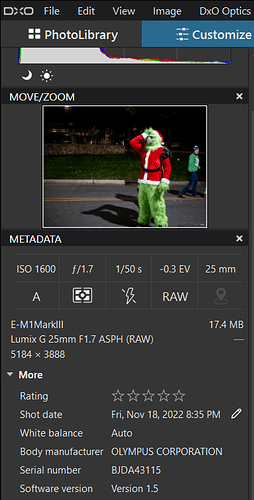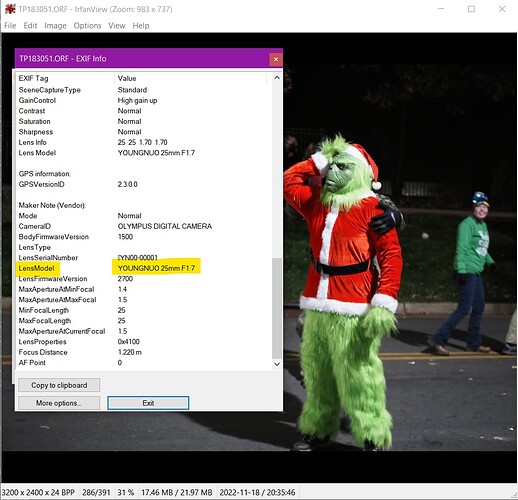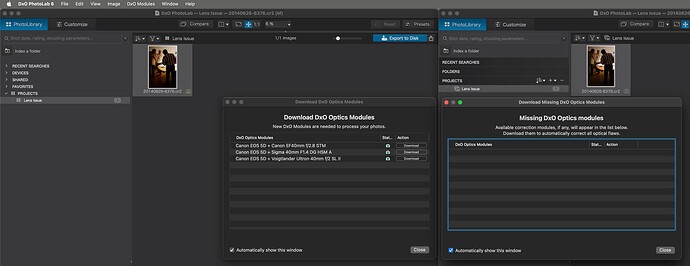DxO does not read/display metadata correctly.
After DxO took several minutes to scan a folder with 391 photos [still very slow], it started downloading the profile for the Panasonic 25/1.7 lens, which I do not even own. Instead, I own a Yongnuo 25/1.7 with a very different optical design, its own firmware and EXIF data identifier.
According to DxO, the file’s EXIF says I shot all these photos with a lens I do not own, have never used, or have ANY files in my computer with metadata from that lens.
Here is IrfanView, showing the actual metadata that’s baked in the raw file from my E-M1 III:
Of all the things I’ve complained about, this is the most telling of simple lack of care from the devs.
It’s metadata, it’s right there, no need for a complex algorithm, you just need to read it, and display it - hell, grab the code from ExifTool if it’s so hard. Why does this expensive program reads the metadata, and proceeds to download a profile for another lens, and display false information?! Metadata completely fabricated by DxO!
It’s not even a catastrophic bug, it’s just simply absurd.
So DxO, why don’t you add the real lens profile to your database? That way PhotoLab 6 Elite, “The most advanced, end-to-end, RAW photo editing software” doesn’t have to come up with another lens profile to download and display false information. By the way, the database is missing many lenses, new and old. Yongnuo, Yi, Meike, TTArtisan, 7Artisans, Rokinon, IRIX, Laowa, Pergear, Voigtländer. Remember Yongnuo, the one at the top of your DxO scores with their 85mm lens?
And why can’t we manually choose the proper lens, since PL6 can’t do it right?
Okay, so that’s off my chest and into the forum, hoping this one won’t be ignored by the devs for 4~5 years like the other threads.




